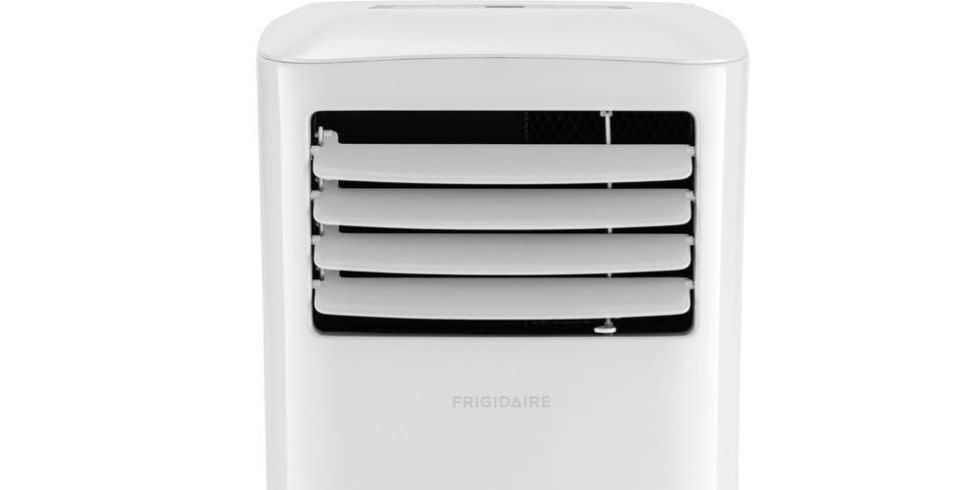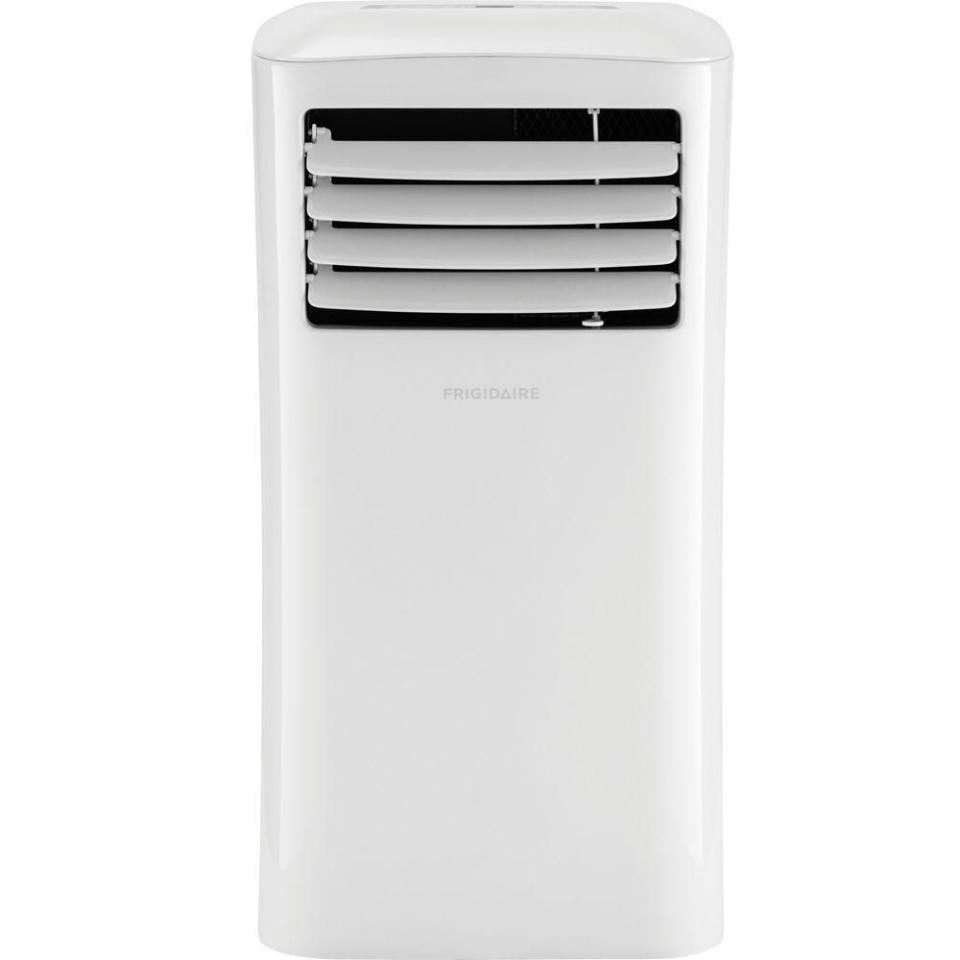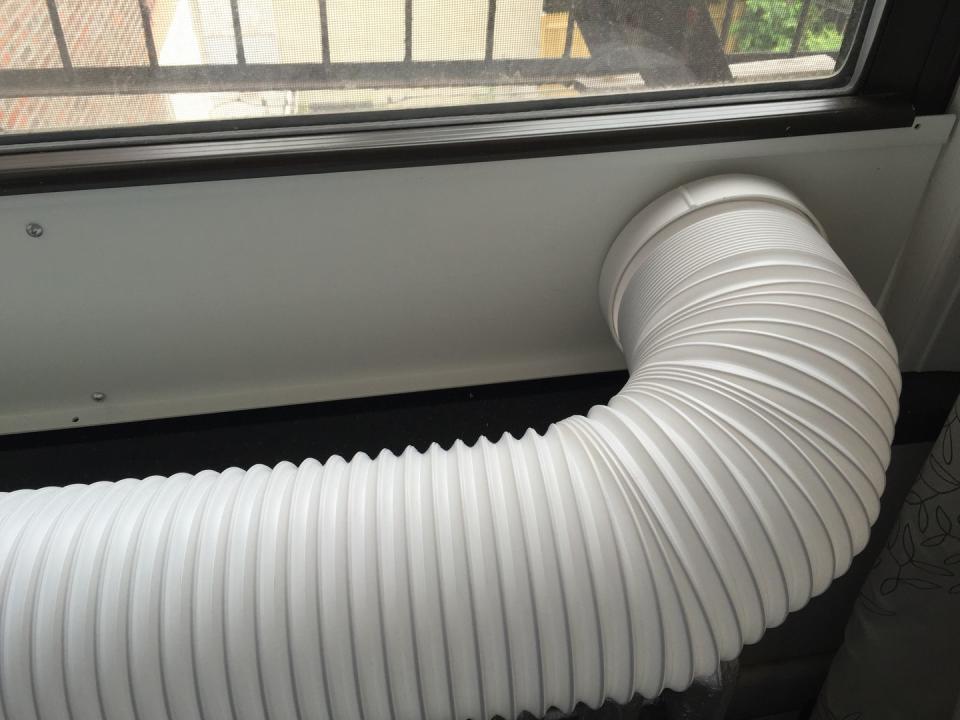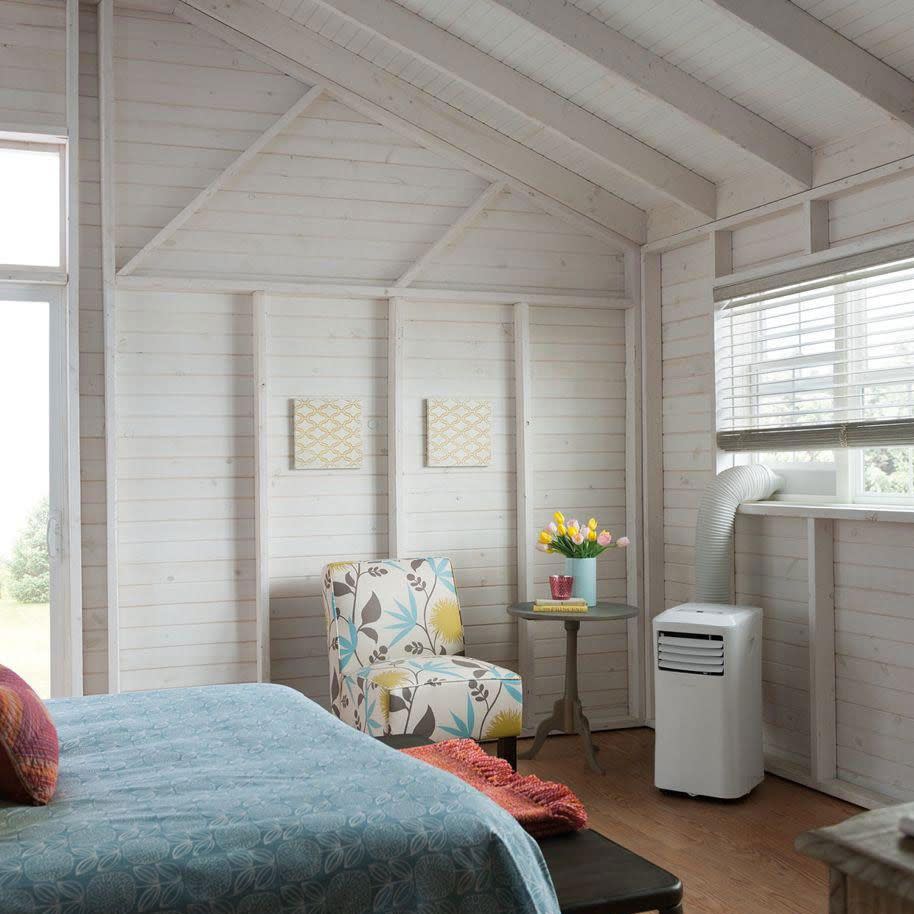I Bought a Portable Air Conditioner. Should You?


A window air conditioning unit is, in many ways, a terrible technology. It's inefficient. It blasts cool air from only one location, as opposed to the many vents of central air. These heavy hunks of metal hang precariously over sidewalks-something I think about whenever I walk the streets of New York, look up at the many window ACs, and ponder the fact that they were installed by amateurs. But when summer comes and your apartment has no central air, the alternative is suffering (or a bunch of big, dust-collecting fans).
Or is it? Many of the same companies that produce window ACs also make portable air conditioning units that don't have to sit in the window. I was only vaguely aware of these machines until this weekend, when the heat wave that pushed temperatures to 90 degrees F in May forced us to consider cooling options for our suddenly roasting bedroom. We wound up with a 8,000 BTU Frigidaire portable unit. Is this kind of air conditioner right for you?
Our main driver in choosing this AC wasn't portability. It was another of the problems with window units: They take over your window and, depending on your style of window, you can't open it until you take out the AC in the autumn. That just wasn't an option for our one-window room, so we decided to seek alternatives.

The Frigidaire portable looks like a mini-fridge on wheels with a vent in the front. The controls are like those of a typical window unit: You can set the temperature and switch between fan and cool modes. This unit also comes with a dehumidifying setting. On the back there's a filter where air gets sucked in, and a port where you have to hook up the exhaust hose: a big, thick dryer hose-like tube that has to run to the window.
Our AC also came with a piece of plastic that fits into your window. It's about 7 inches tall and slides to adjust to the window's width. There's a hole where the exhaust hose locks in. Once that's in place and you close the window on top of the plastic piece, you can turn on the machine; it starts blowing cool air out the front and blowing the hot exhaust though the hose, out the hole, and to the outside world.
This is where we get to the problem with portable ACs: "portable" is relative. The machine creates heat that has to go somewhere. That's why your window AC unit is in the window in the first place-the exhaust comes off the back and goes out into the atmosphere rather than filling your house. A portable AC is portable in the sense that it can roll around, allowing you to change the point where cool air is blowing. But it's also tethered to the window (or another opening like a screen door). It can only go as far as the exhaust hose stretches, which in the case of ours is about 5 feet.
For us, that works. We were looking for a solution that wouldn't sacrifice an entire window all summer long, and now we can still open the window whenever we want even with the plastic piece in there. I don't know if I'd call it "portable," though.
Yes, the unit can roll away from the window as far as the exhaust hose extends, but that's a bit of pain, as the bulky hose is hard to adjust. (It's also not necessary, because the 8,000-BTU Frigidaire has plenty of oomph for one room.) If I wanted to move it to another room, it'd have to sit near the window there, and I'd have to readjust the plastic piece to fit a different window. It's doable, sure. But I wouldn't do it twice a day to move the AC between the living room and the bedroom.

These things are a bit pricey, too. During our hunt for the portable AC, Target was selling (and quickly selling out of) a bare-bones 5,000-BTU window unit for $110. We got the 8,000-BTU Frigidaire on sale for $260 at Best Buy; it typically costs $300. Most portables you see will be that expensive or higher, if only because companies typically don't make them smaller than ours.
[Note: Commenters have asked about a couple of other issues with portable ACs. First, power. Subjectively, our portable certainly feels like it's using more energy to pump more air. For objective numbers, compare Frigidaire's portable AC to the company's window unit with the same capability-8,000 BTUs to cool 350 square feet. The window unit uses 6.2 amps and 708 watts in cool mode. The portable, 8 amps and 895 watts. The other issue is water that collects inside the machine during the dehumidifying mode. You've eventually got to hook up a hose to run that water out.]
If you find yourself in a situation like ours, where you need to cool a room but a window AC won't do, then a portable is definitely an option. You'll probably pay more for it, but it's nice to keep your window.
"Portable," though. The promise displayed in pictures of these machines is a false one, suggesting a gadget that can roll around to bring the chill anywhere in the house. The smaller photo on the back of our Frigidaire box (seen above) is more realistic, showing the AC sitting in the corner, the big hose snaking up to a window. If that sounds better to you than hanging a big metal box out your window, then a portable AC might be right for you. Just know what you're getting into before it arrives.
('You Might Also Like',)

